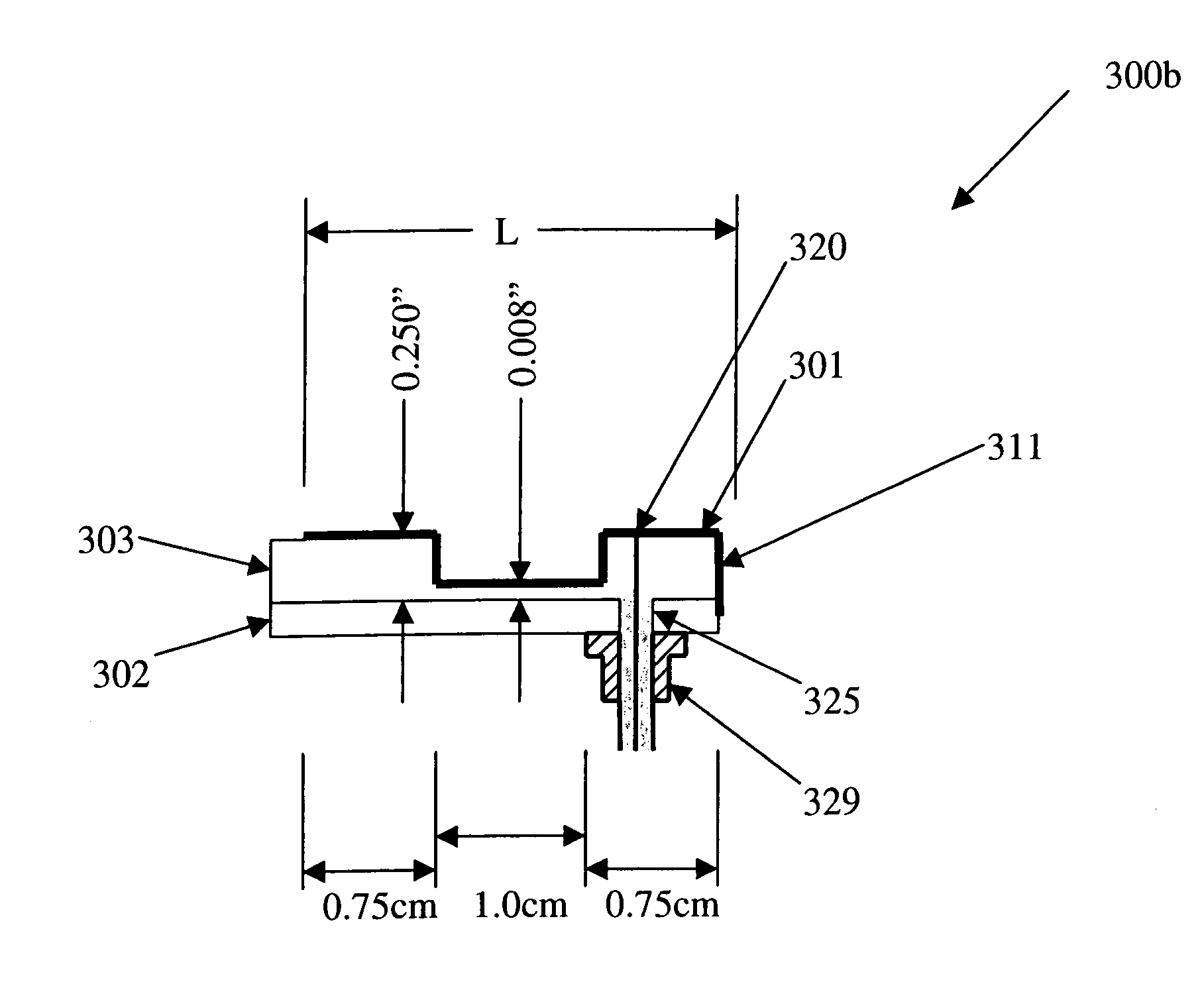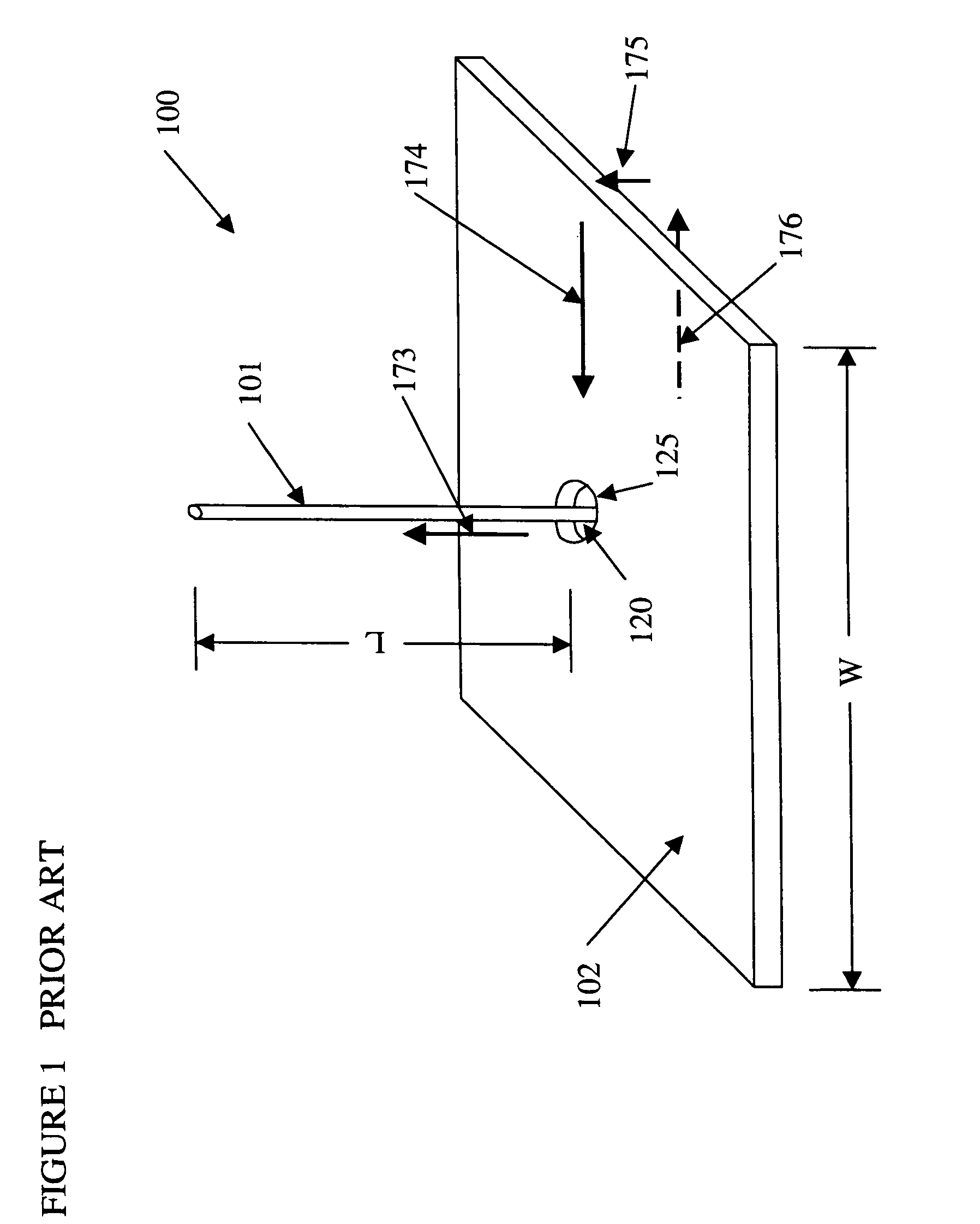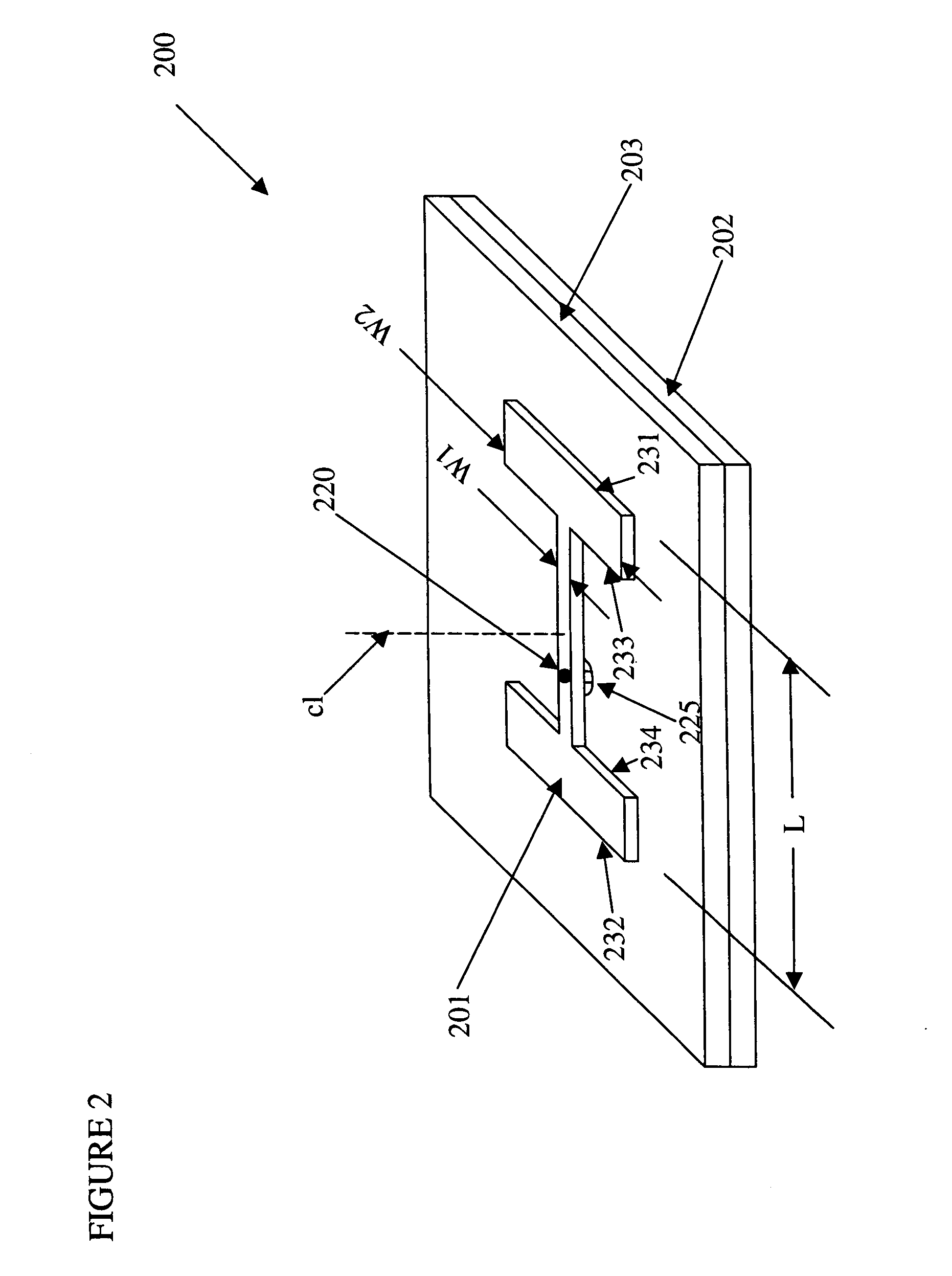Methods and apparatus for implementation of an antenna for a wireless communication device
a wireless communication device and antenna technology, applied in the direction of antenna earthing, resonance antenna, radiating element structure, etc., can solve the problems of increasing interest and concern, microstrip length has become a limitation, and sar represents a perceived risk of long-term exposure of head tissues, so as to reduce sar
- Summary
- Abstract
- Description
- Claims
- Application Information
AI Technical Summary
Benefits of technology
Problems solved by technology
Method used
Image
Examples
Embodiment Construction
[0044]The making and using of the presently preferred embodiments are discussed in detail below. It should be appreciated, however, that the present invention provides many applicable inventive concepts that can be embodied in a wide variety of specific contexts. The specific embodiments discussed are merely illustrative of specific ways to make and use the invention, and do not limit the scope of the invention.
[0045]Reference is now made to the drawings, wherein like designations indicate like elements, as well as numerals ending in the same last two digits. Referring initially to FIG. 1, a monopole antenna 100 of the prior art is illustrated. The monopole antenna 100 includes a conductive wire 101 extending above a ground plane 102. The monopole antenna is fed through an aperture 125 in the ground plane from a feed point 120 by an RF power source (not shown). The monopole antenna extends a distance L above the ground plane, typically about a quarter wavelength at the transmitting ...
PUM
 Login to View More
Login to View More Abstract
Description
Claims
Application Information
 Login to View More
Login to View More - R&D
- Intellectual Property
- Life Sciences
- Materials
- Tech Scout
- Unparalleled Data Quality
- Higher Quality Content
- 60% Fewer Hallucinations
Browse by: Latest US Patents, China's latest patents, Technical Efficacy Thesaurus, Application Domain, Technology Topic, Popular Technical Reports.
© 2025 PatSnap. All rights reserved.Legal|Privacy policy|Modern Slavery Act Transparency Statement|Sitemap|About US| Contact US: help@patsnap.com



